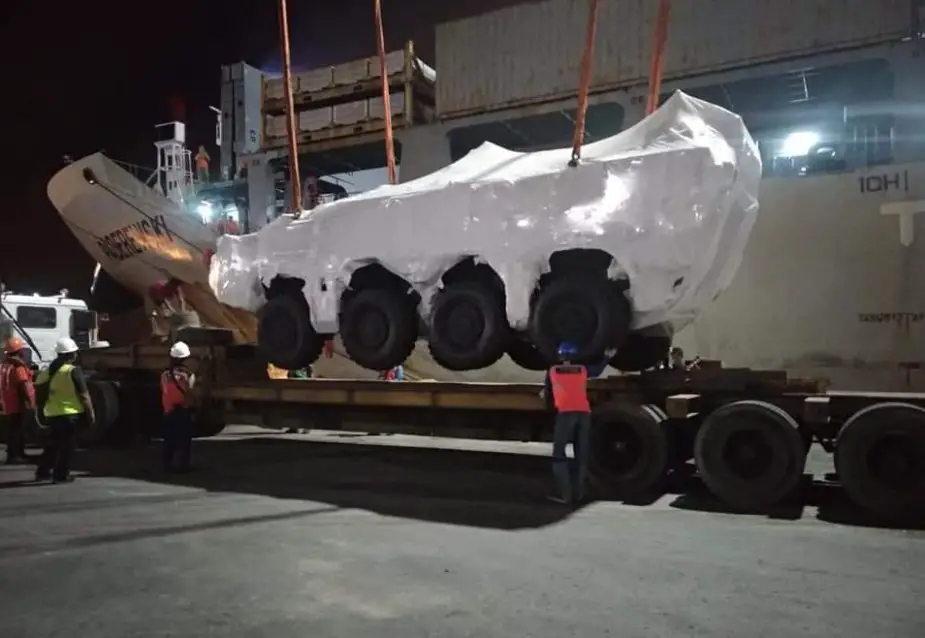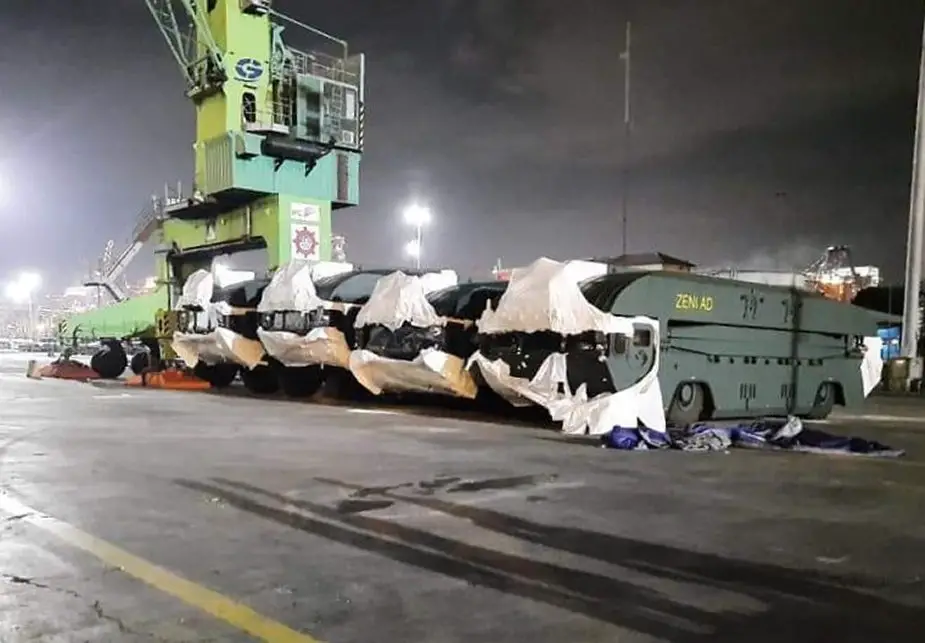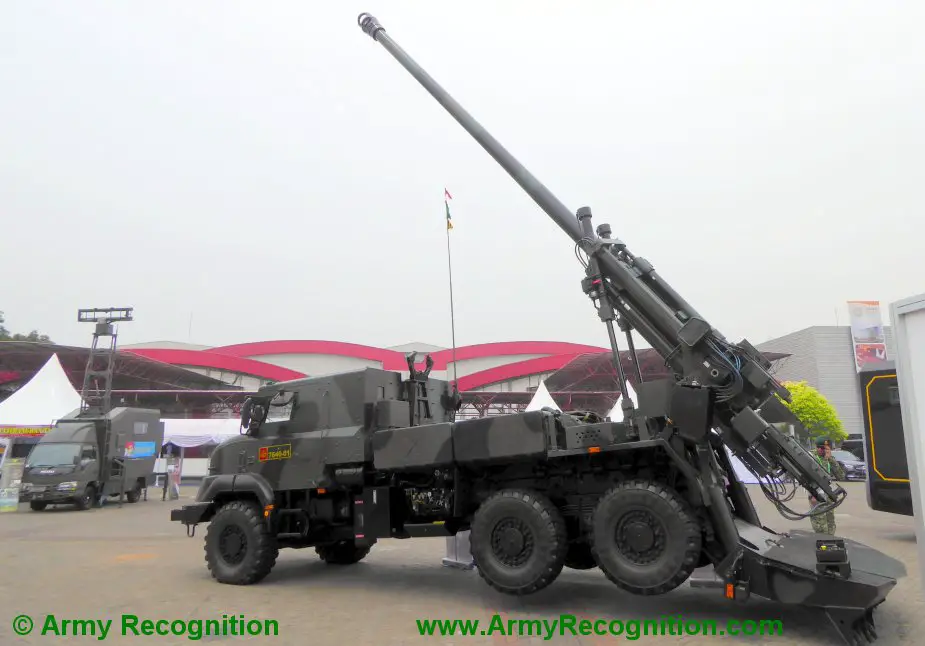In this early year 2020, the TNI (Indonesian army) has just received several vehicles of three different types: Pandur II Cobra Armored Fighting Vehicles, M3 Amphibious Bridge and Ferry systems, and CAESAR 155mm self-propelled howitzers.

Pandur II - Cobra unloaded in Jakarta (Picture source: Twitter account/Putut Reza)
Pandur II, or Cobra
On April 12, 2019, the Indonesian Ministry of Defense issued PT Pindad a contract worth $ 80 million for the production of the first 22 Pandur II series 8x8 infantry fighting vehicles that received the Indonesian designation Cobra. The vehicles had to be delivered to the Indonesian army within three years and will reportedly be equipped with the Israeli remote-controlled uninhabited combat module Elbit Systems U30 Mk II, which Ares (Elbit Systems Brazilian) will supply with a Northrop Grumman Bushmaster Mk.44 30mm automatic gun and two 7.62mm machine guns.
Four Pandur II vehicles were received by PT Pindad in 2017 from the Czechoslovak company Excalibur Army, which is part of the Excalibur Group (now called Czechoslovak Group, GSG). Excalibur, in 2015, acquired the license to manufacture the Pandur II armored vehicles from GDELS.
Initially, the Pandur II family in the 6x6 and 8x8 configurations was developed by the Austrian company Steyr-Daimler-Puch Spezialfahrzeug, now part of the European division of General Dynamics Corporation as General Dynamics European Land Systems - Steyr (GDELS-Steyr). It was a further development of the previously produced – and very popular - Steyr-Daimler-Puch 6x6 armored personnel carrier.

GDLS M3 Amphibious Bridge and Ferry system (Picture source: Twitter account/Putut Reza)
GDLS M3 Amphibious Bridge and Ferry System
In February 2017, General Dynamics European Land Systems announced that it had signed a contract for the production and delivery of the latest variant of its M3 Amphibious Bridge and Ferry System for a customer in Southeast Asia, without naming it, nor the number of systems purchased. It appears now that it was Indonesia. The deliveries would include an ILS package consisting of a simulator system, training, special tools and manuals. NATO and non-NATO nations use the M3 in different roles, from combat operations to civil defense missions. M3Amphibious Bridge and Ferry System can carry payloads of up to MLC85 tracked vehicles and MLC 132 wheeled vehicles, and can build a 100m (330 ft) floating bridge in less than 10 minutes.
On Feb.4, 2020, four M3s were seen unloaded in Jakarta.

Nexter CAESAR 155mm self-propelled howitzer displayed at IndoDefense 2018 in Jakarta (Picture source: Army Recognition)
Nexter CAESAR
On 31st of January, 12 Nexter CAESAR 155mm self-propelled guns were unloaded in Jakarta, along with simulators and auxiliary vehicles.
In November 2012, Nexter Systems signed a contract with Indonesia for the purchase of 37 CAESAR 155mm self-propelled howitzers, 36 of which would equip two artillery regiments, battalions of three batteries each (6 units per battery) and one for training. The last one was for training purposes. The cost was € 115 million. Nexter Systems would give the company PT Pindad technologies to provide the service of artillery systems in Indonesia.
The use of the CAESAR by the TNI (Indonesian army) proved to be so satisfactory that a second purchase contract amounting to € 60Mn for 18 additional CAESARs was announced during the Idex 2017 defense exhibition. This contract included 50 auxiliary vehicles to be assembled in Indonesia by PT Pindad.
Notice that, in March 2019, a CAESAR was seen in Shah Alam, Malaysia, for mobility and firing trials. The 6x6 truck-mounted gun was seen traveling on a road near Kemaman, with at least one picture posted on social media.














